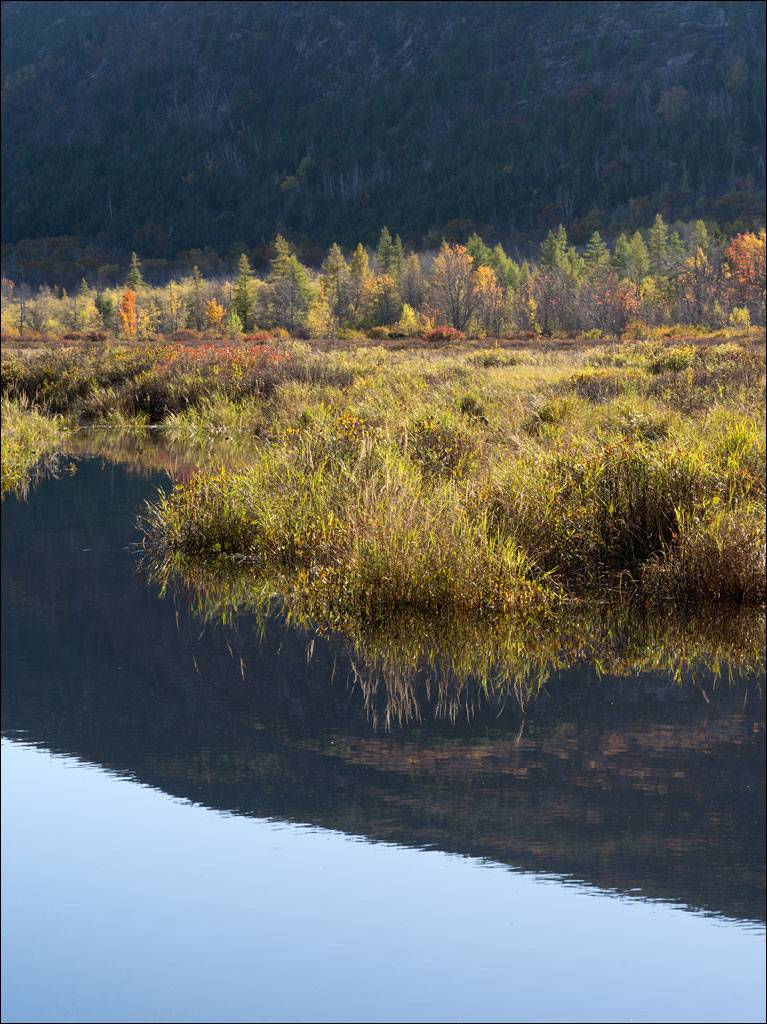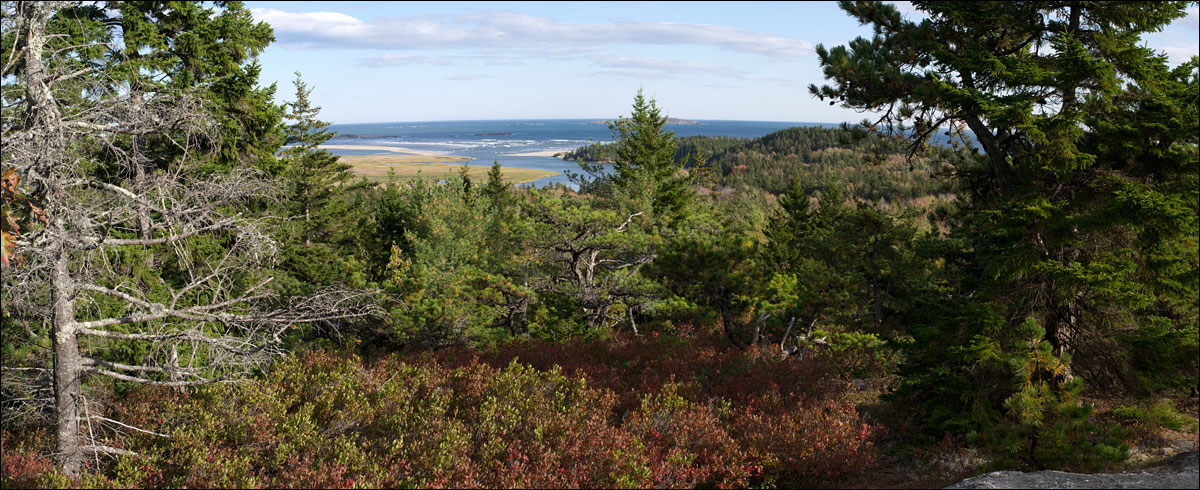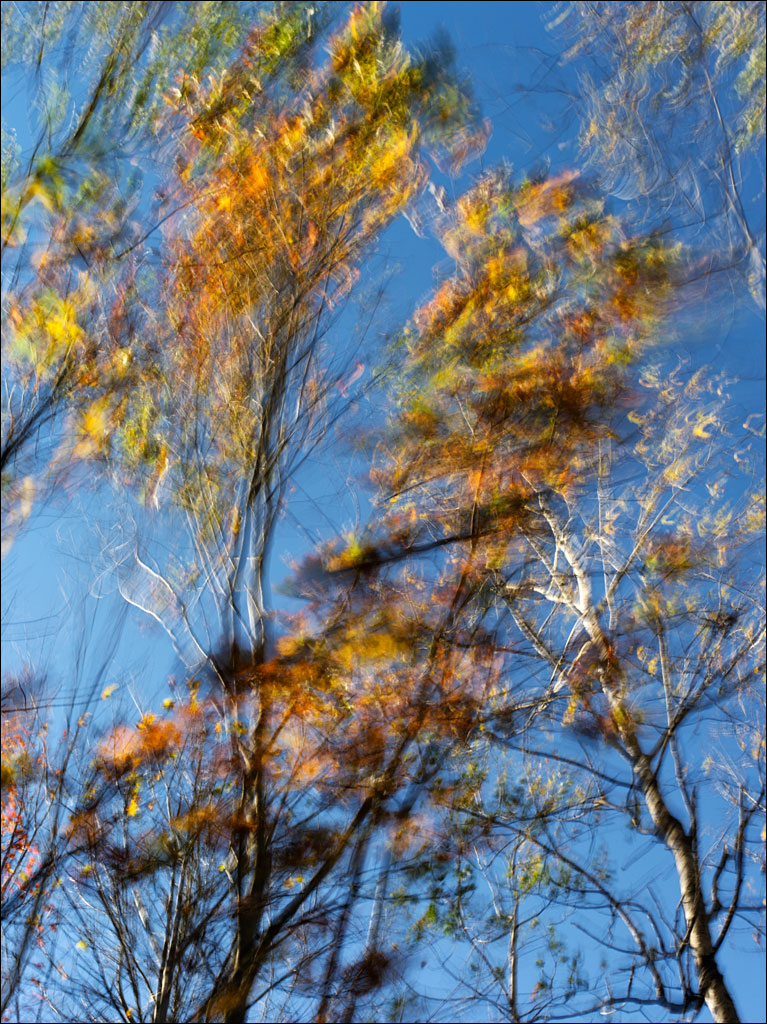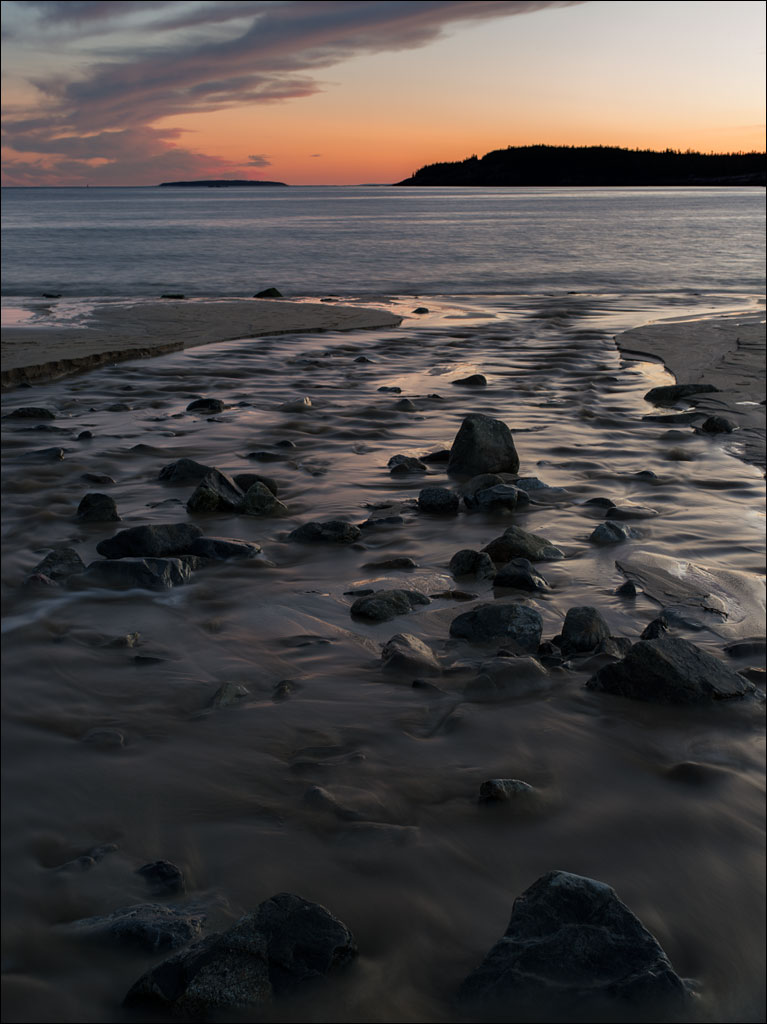 Sand Beach is one of the most popular destinations in Acadia National Park. While Maine has a long coastline, most of it is rocky. In late October, the area is populated by a few dozen people (in summer, when the water temperature is no warmer than 55°F/13°C, huge crowds come to swim). The outlet for Beehive Lagoon cuts through the beach next to Great Head. Otter Cliffs and Baker Island can be seen on the horizon. Click on the image for a larger view.
Sand Beach is one of the most popular destinations in Acadia National Park. While Maine has a long coastline, most of it is rocky. In late October, the area is populated by a few dozen people (in summer, when the water temperature is no warmer than 55°F/13°C, huge crowds come to swim). The outlet for Beehive Lagoon cuts through the beach next to Great Head. Otter Cliffs and Baker Island can be seen on the horizon. Click on the image for a larger view.
Tag Archives: Pentax 645D
Coastal Forests
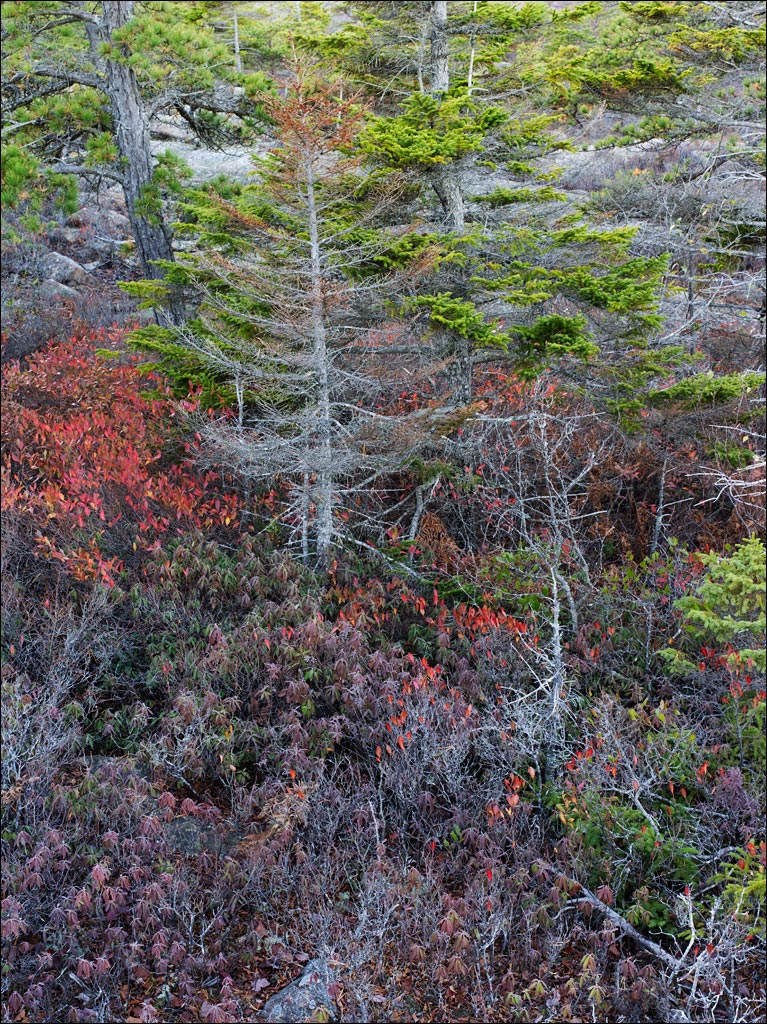 The summit of Great Head in Acadia National Park is a testament of the resilience and diversity of life. Spruce/fir forests dominate the harsh coastal environment. Plants take any opportunity in every small patch of soil between the granite slabs. Late fall stratifies these colonists into a diverse palette of color. Click on the image for a larger view.
The summit of Great Head in Acadia National Park is a testament of the resilience and diversity of life. Spruce/fir forests dominate the harsh coastal environment. Plants take any opportunity in every small patch of soil between the granite slabs. Late fall stratifies these colonists into a diverse palette of color. Click on the image for a larger view.
Great Head
The Oaks of Fall
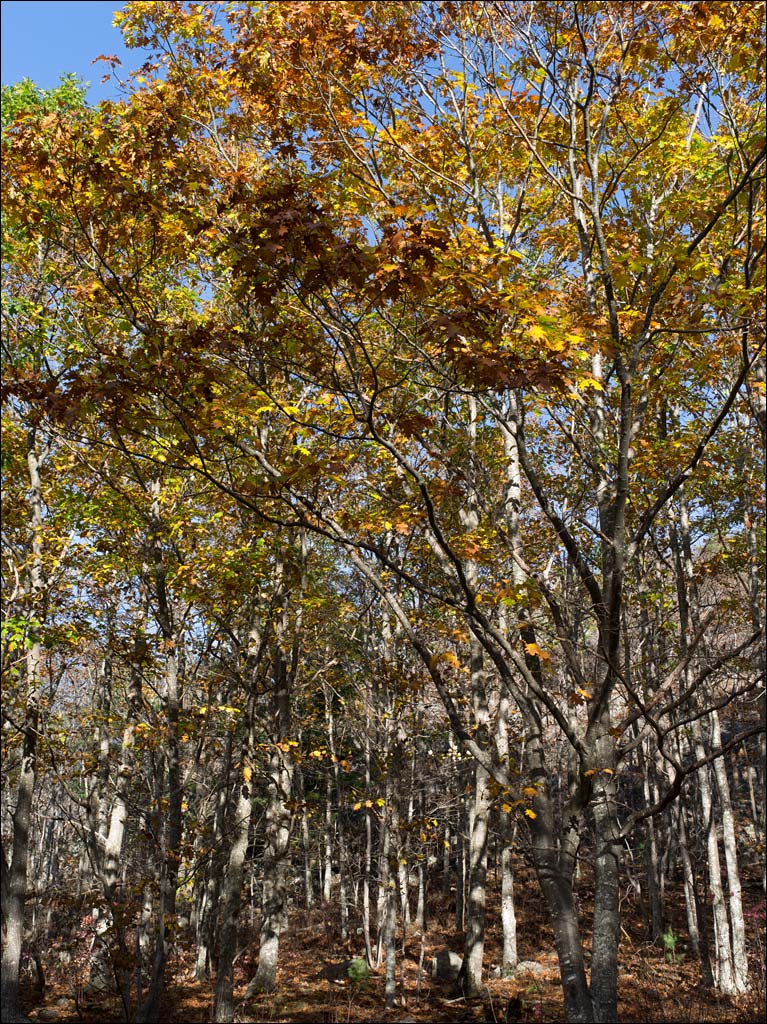 The oaks seem to be the last of the hardwoods to lose their leaves. Away from the coast, Acadia National Park has beautiful groves of oak trees. The rich, golden-brown canopy may not compete with aspen and maple for dazzling color, but now, without that competition, oak dominates the landscape. Click on the image for a larger view.
The oaks seem to be the last of the hardwoods to lose their leaves. Away from the coast, Acadia National Park has beautiful groves of oak trees. The rich, golden-brown canopy may not compete with aspen and maple for dazzling color, but now, without that competition, oak dominates the landscape. Click on the image for a larger view.
Under Dorr Mountain
To the Sea
On Mt. Battie
 At 800ft/250m, Mt. Battie in Camden Hills State Park is not a huge mountain. The area is mostly covered with mixed hardwood forests, but the ridges expose the plant life to harsh conditions. In areas with little soil, the flora appears to be more suited to alpine zones. And a rich mix of these plants cover the ground between slabs of granite. Click on the image for a larger view.
At 800ft/250m, Mt. Battie in Camden Hills State Park is not a huge mountain. The area is mostly covered with mixed hardwood forests, but the ridges expose the plant life to harsh conditions. In areas with little soil, the flora appears to be more suited to alpine zones. And a rich mix of these plants cover the ground between slabs of granite. Click on the image for a larger view.
Camden & Penobscot Bay
 Camden is an affluent community on the coast of Penobscot bay—it is the quintessential New England village. Penobscot bay is a huge waterway that cuts deep into the Maine coast and defines the eastern edge of Central Maine. This image was taken from Mt. Battie in Camden Hills State Park, looking south towards the Gulf of Maine. Click on the image for a larger view.
Camden is an affluent community on the coast of Penobscot bay—it is the quintessential New England village. Penobscot bay is a huge waterway that cuts deep into the Maine coast and defines the eastern edge of Central Maine. This image was taken from Mt. Battie in Camden Hills State Park, looking south towards the Gulf of Maine. Click on the image for a larger view.
Leaf Litter
 Leaf litter seems a rather undignified term. Perhaps it is our frustration of having to empty the gutters around the house and rake the lawn this time of year. But it really does not give respect to an amazingly efficient way the forest recycles what it creates. And what I find equally amazing is that in that forest refuse there are signs of life ignoring the signals of the approaching winter. Juniper haircap moss, Polytrichum juniperinum, can be seen poking through the dried leaves on our forest floor when most of the other flora that was so bountiful during the spring and summer have disappeared. Click on the image for a larger view.
Leaf litter seems a rather undignified term. Perhaps it is our frustration of having to empty the gutters around the house and rake the lawn this time of year. But it really does not give respect to an amazingly efficient way the forest recycles what it creates. And what I find equally amazing is that in that forest refuse there are signs of life ignoring the signals of the approaching winter. Juniper haircap moss, Polytrichum juniperinum, can be seen poking through the dried leaves on our forest floor when most of the other flora that was so bountiful during the spring and summer have disappeared. Click on the image for a larger view.


